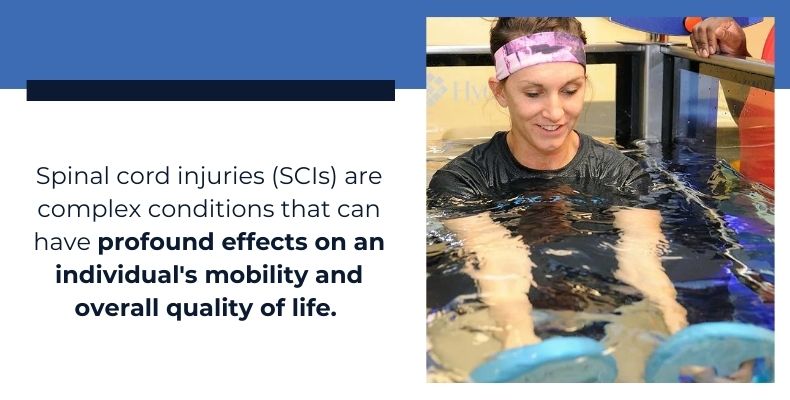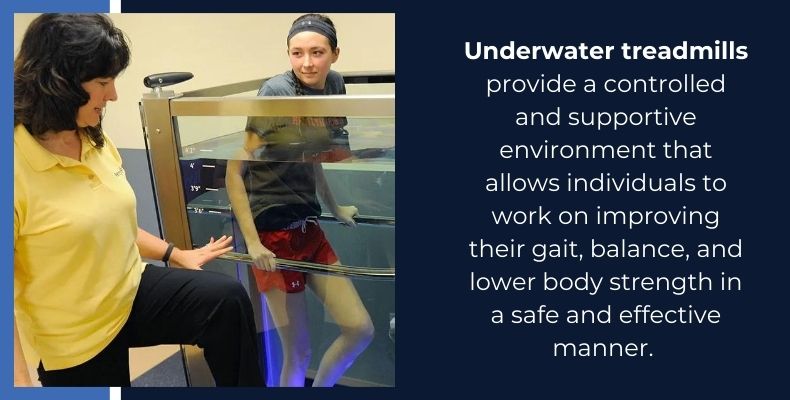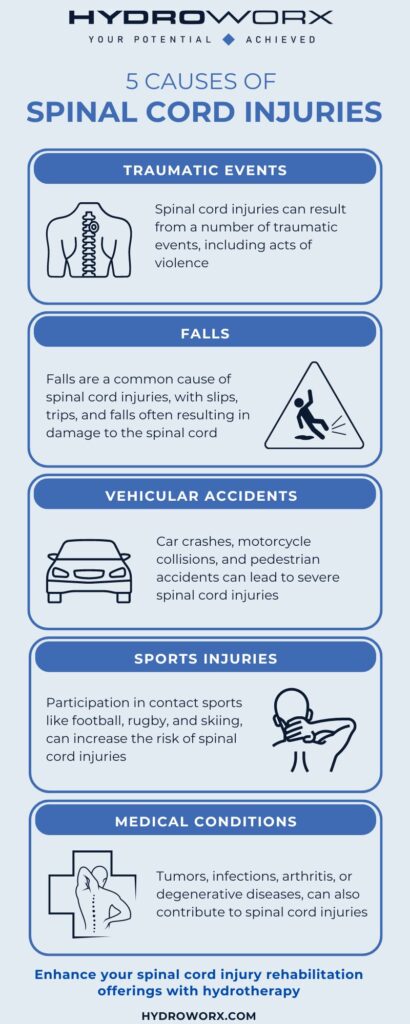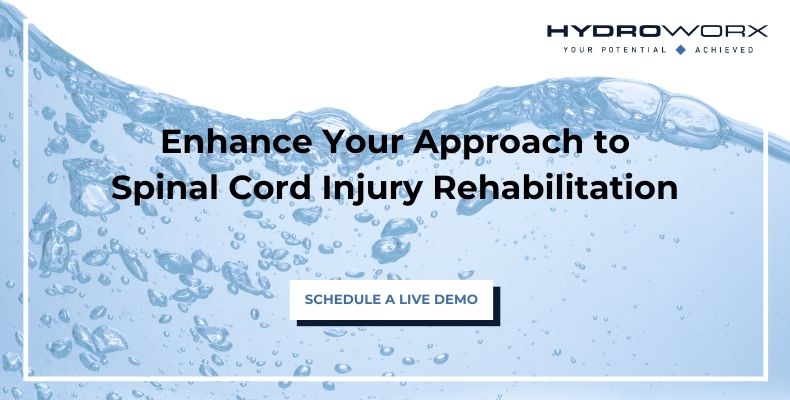Aquatic Therapy for Spinal Cord Injuries: Improving Function and Mobility
Aquatic therapy provides a supportive environment for individuals with spinal cord injuries to engage in targeted exercises that can enhance strength, flexibility, and overall physical capabilities. As a cutting-edge approach in spinal cord injury rehabilitation, aquatic therapy offers a unique and effective method to improve function and mobility in individuals facing such challenges.
In this blog article from HydroWorx, we will explore the potential of aquatic therapy for individuals living with spinal cord injuries, shedding light on how the buoyancy and resistance of water can be leveraged to optimize rehabilitation outcomes and empower individuals to achieve greater independence. Keep reading to learn more as we explore the role of aquatic therapy in promoting functional recovery, improving mobility, and unlocking new possibilities for individuals seeking to enhance their quality of life despite the limitations posed by spinal cord injuries.

Understanding Spinal Cord Injuries
Spinal cord injuries (SCIs) are complex conditions that can have profound effects on an individual’s mobility and overall quality of life. These injuries typically result from trauma, such as accidents or falls, which damage the spinal cord and disrupt communication between the brain and the rest of the body. Understanding the nature of spinal cord injuries is essential for designing effective rehabilitation strategies that address the specific needs of individuals with SCIs.
- Causes: Spinal cord injuries can be caused by various factors, including vehicular accidents, falls, sports injuries, or violence. The severity of the injury often determines the degree of impairment and functional limitations.
- Impact: SCIs can lead to partial or complete paralysis, loss of sensation, impaired motor function, and potential complications like neuropathic pain or muscle spasticity. These challenges can significantly impact an individual’s independence and ability to perform daily tasks.
- Levels of Injury: The level and extent of the spinal cord injury location play a crucial role in determining the areas of the body affected and the degree of impairment. Injuries higher up on the spinal cord often result in more severe impairments compared to lower-level injuries.
- Rehabilitation Needs: Individuals with spinal cord injuries require comprehensive rehabilitation programs tailored to their specific impairments and functional goals. Rehabilitation focuses on improving mobility, strength, coordination, and overall independence to enhance quality of life.

Benefits of Aquatic Therapy for Spinal Cord Injuries
Aquatic therapy is a highly effective modality for individuals with spinal cord injuries, offering a host of benefits that can positively impact their function and mobility. The buoyancy, resistance, and support provided by water create a therapeutic environment that enhances rehabilitation outcomes and fosters physical improvement. Here are the key benefits of aquatic therapy for individuals with spinal cord injuries:
- Reduced Joint Strain: The buoyant force of water reduces the gravitational load on the body, alleviating stress on the joints and allowing individuals to move more freely without the constraints of gravity.
- Enhanced Muscle Strength: Water resistance in aquatic therapy exercises helps individuals strengthen their muscles without excessive strain, contributing to improved overall strength and muscle tone.
- Improved Range of Motion: The supportive nature of water enables individuals to perform a wider range of motion exercises, enhancing flexibility and mobility in areas affected by spinal cord injuries.
- Cardiovascular Conditioning: Aquatic therapy provides a conducive environment for cardiovascular exercise, promoting heart health and endurance training while minimizing impact on the joints.
- Enhanced Balance and Coordination: The stability challenges posed by water create opportunities for individuals to improve their balance and coordination, which are crucial for navigating daily activities and enhancing functional abilities.

Spinal Cord Injury Rehabilitation Exercises
There are a number of aquatic exercises that can be beneficial during the spinal cord injury rehabilitation process, including:
- Walking on an Underwater Treadmill: Walking on an underwater treadmill is a fundamental aquatic exercise that offers unique benefits for individuals with spinal cord injuries. The underwater treadmill provides a controlled and supportive environment that allows individuals to work on improving their gait, balance, and lower body strength in a safe and effective manner.
- Hydrotherapy Pool Resistance Training: Resistance training in a hydrotherapy pool is a key component of aquatic therapy for individuals with spinal cord injuries. Utilizing water resistance, individuals can engage in exercises such as leg lifts, arm curls, and aquatic squats to target different muscle groups and promote overall strength building. The resistance provided by the water challenges the muscles while offering a low-impact environment for effective strength training.
- Aquatic Balance Exercises: Balance is essential for functional mobility, and aquatic balance exercises play a vital role in improving core stability, coordination, and postural control for individuals with spinal cord injuries. Activities like standing on one leg or performing stability drills on a floating device help individuals enhance their balance and proprioception in a safe and supportive aquatic environment.
- Range of Motion and Flexibility Exercises: Aquatic therapy enables individuals to perform a variety of range of motion and flexibility exercises to enhance joint mobility and reduce stiffness. Movements like arm circles, leg swings, and trunk rotations help individuals maintain and improve their flexibility, promoting better movement patterns and mobility in daily activities.
- Functional Activities and Gait Training: Functional activities and gait training exercises in the water focus on replicating real-world movements and walking patterns to enhance walking abilities and daily living tasks.

Invest in Aquatic Therapy Equipment for Spinal Cord Injuries
Are you a physical therapist looking to enhance the quality of care you provide to individuals with spinal cord injuries? Take the plunge into aquatic therapy equipment from HydroWorx and revolutionize your approach to spinal cord injury rehabilitation today.

